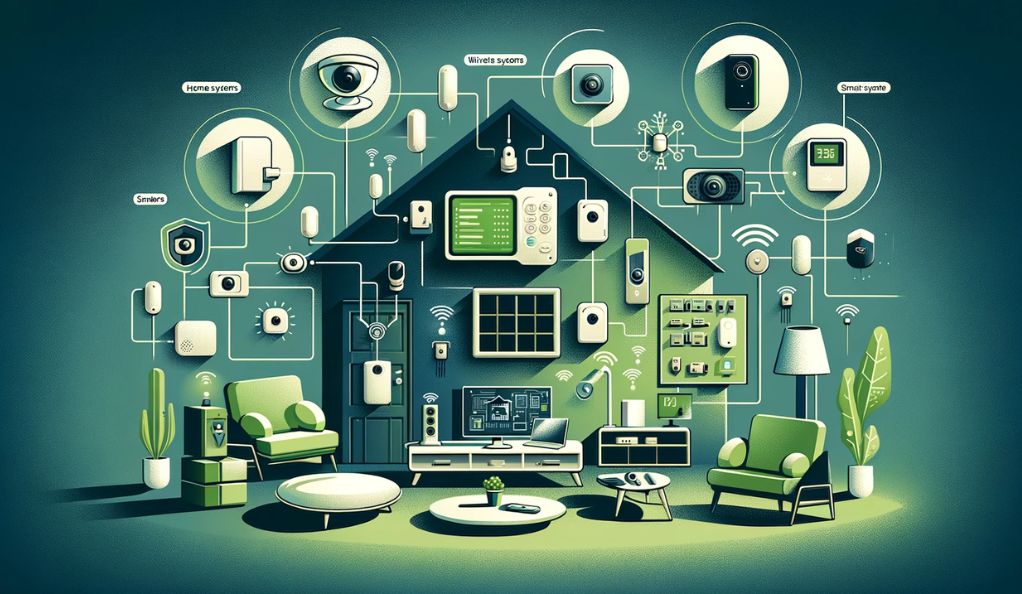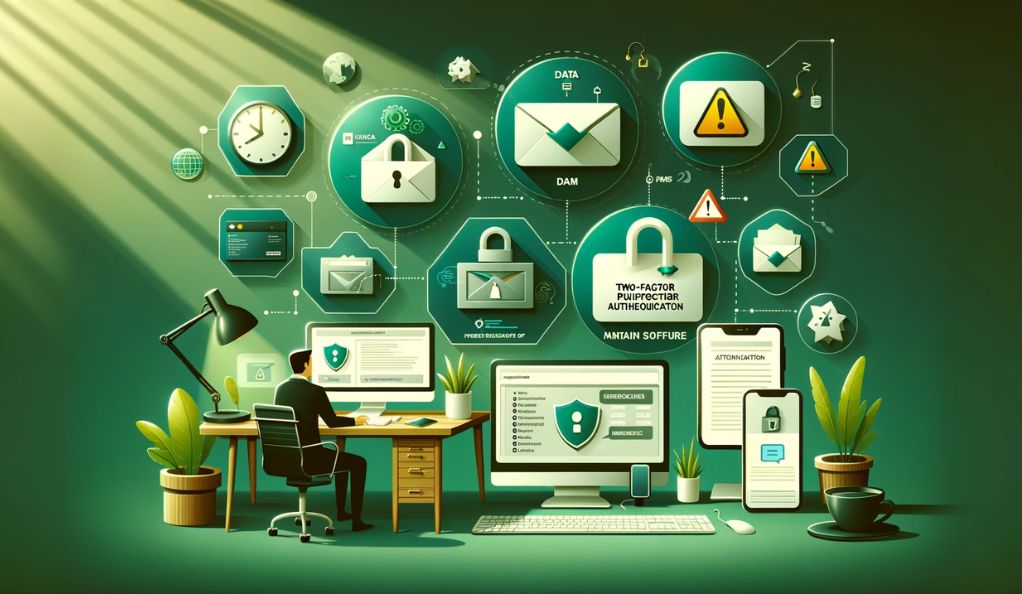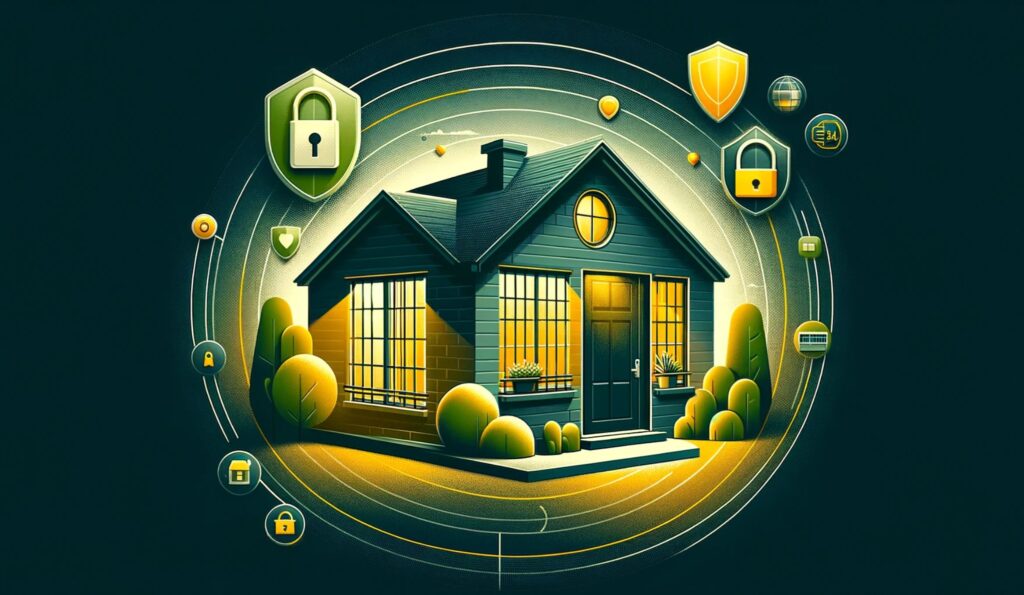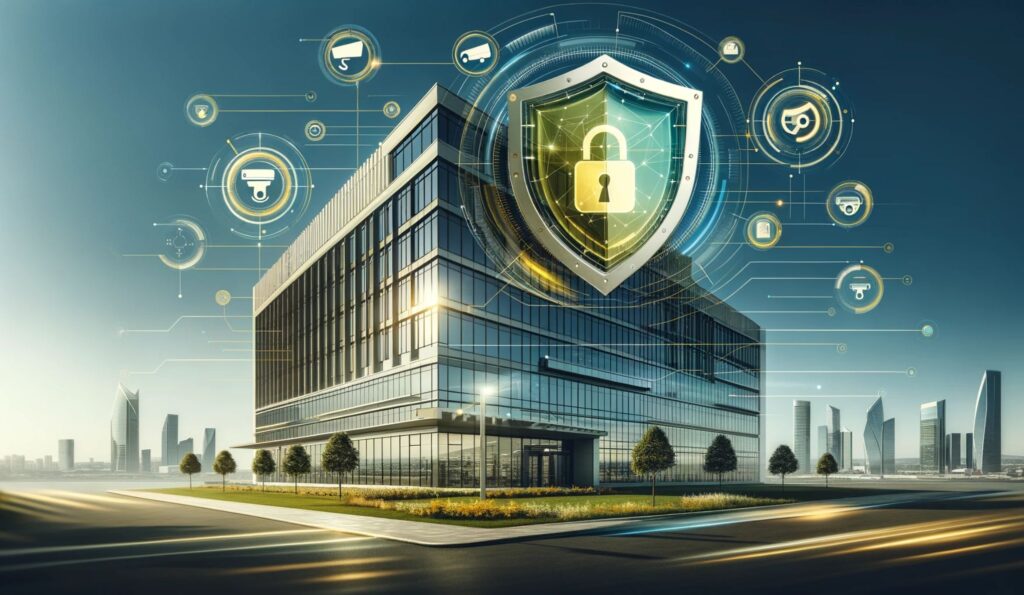Introduction to Remote Monitoring
In the evolving landscape of modern work environments, remote monitoring has become a cornerstone of home office security. With the rise of remote work, particularly accelerated by the COVID-19 pandemic, the need for robust security measures has never been more crucial. Remote monitoring encompasses a range of technologies and practices aimed at ensuring the safety and integrity of both digital and physical aspects of a home office. This section will delve into the significance of remote monitoring in today’s work-from-home trend and explore how it’s reshaping the approach to home office security.

The Shift to Remote Work and Its Implications
The transition to remote work has brought forth a paradigm shift in how we perceive office security. Unlike traditional office environments, where security measures are often centrally managed, home offices pose unique challenges. The integration of personal and professional data, along with the diverse range of devices and networks used, increases the vulnerability to security breaches. As reported by Trend Micro, the increase in employees signing in remotely to corporate networks and using cloud-based applications opens doors to security risks and cyberthreats.
The Role of Remote Monitoring
Remote monitoring in the context of home office security involves overseeing and managing the security of both network and physical components. This includes monitoring internet connections, devices, data access, and physical security measures. Essential aspects of remote monitoring involve ensuring network security, protecting sensitive data, and preventing unauthorized access.
Network Security
Securing the home network is the first line of defense in remote monitoring. This involves setting up strong, unique passwords for Wi-Fi routers and employing advanced encryption protocols like WPA3 to protect data from eavesdropping and unauthorized access. Additionally, the use of Virtual Private Networks (VPNs) is crucial. VPNs create an encrypted tunnel between a device and the internet, safeguarding internet traffic from external threats, particularly when using public Wi-Fi networks.
Data Protection
In remote work settings, sensitive company data might be accessed and stored on personal devices or unsecured networks, increasing the risk of data leaks and breaches. Protecting this data involves a combination of secure authentication methods like two-factor authentication and regular security updates to patch vulnerabilities.
Physical Security Measures
Physical security measures in a home office include using security cameras, door sensors, and alarm systems. These systems can be integrated into a home network, allowing remote access and control. This integration enables homeowners to monitor their home office environment in real-time, even when they’re away.
Understanding the Basics of Home Security Systems
The foundation of effective remote monitoring lies in understanding and choosing the right home security system. With a plethora of options available in the market, selecting a system that aligns with your specific needs is crucial. This segment explores the different types of home security systems and highlights key features to consider when making your selection.
Types of Home Security Systems
- Traditional Wired Systems: These are the conventional types of security systems, involving wiring throughout the home to connect sensors and cameras to a central control panel. While reliable, installation can be more complex and less flexible in terms of placement.
- Wireless Systems: These systems use wireless technology to connect sensors, cameras, and other components. They are easier to install and offer more flexibility in placement. Companies like InGrid offer self-installed starter kits, making them a popular choice for many homeowners.
- Smart Home Security Systems: These integrate security with smart home technology, allowing for remote control and monitoring via smartphones or other devices. Features can include smart locks, lights, and thermostats, all controllable from a central app.
- Do-It-Yourself (DIY) Systems: For those preferring a more hands-on approach, DIY systems provide the components for homeowners to set up their own system. These systems often offer flexibility and cost savings.

Key Features to Consider
- Remote Access and Control: Essential for home office security, remote access allows homeowners to monitor and control their security system via a web-enabled device. This feature enables real-time surveillance and alerts.
- Motion Detectors and Sensors: Essential for detecting unauthorized movement or entry. Door and window sensors add an extra layer of security by triggering alerts when opened.
- High-Quality Cameras: For visual monitoring, high-quality cameras are vital. Consider features like night vision, motion detection, and the ability to record and store footage.
- Professional Monitoring vs. Self-Monitoring: Some systems offer professional monitoring services, where a company monitors your home and responds to alerts. Self-monitoring systems, on the other hand, send alerts directly to the homeowner.
- Integration with Other Devices: Systems that can integrate with other smart home devices provide enhanced functionality and ease of use.
- Cost Considerations: Evaluate the upfront costs and potential monthly fees. Systems requiring professional installation or monitoring services typically involve additional costs.
Strengthening Wi-Fi Security to Prevent Unauthorized Access
Wi-Fi security is a pivotal aspect of remote monitoring in home offices. Ensuring a secure and robust Wi-Fi connection is critical in protecting sensitive information and maintaining the integrity of remote work environments.
Importance of Strong Wi-Fi Passwords
A strong and unique password for your Wi-Fi router is the first line of defense in network security. Avoid default or predictable passwords and opt for complex combinations of upper and lower-case letters, numbers, and special characters. Aim for a minimum length of 12 characters and avoid using personal information or common words.
Employing Advanced Encryption Protocols
Wi-Fi Protected Access 3 (WPA3) is the latest standard in wireless network security, offering improved encryption over its predecessors. Ensuring your router is set to use WPA3 encryption is crucial in protecting your data from potential eavesdropping and unauthorized access. For devices that do not support WPA3, WPA2 with AES encryption is a viable alternative.
Disabling Wi-Fi Protected Setup (WPS)
While convenient for quickly connecting devices, WPS is vulnerable to brute-force attacks. Disabling WPS on your router eliminates a potential security weakness, further securing your home network.
Leveraging Virtual Private Networks (VPNs) for Enhanced Online Security
VPNs play a critical role in enhancing online security, especially for remote workers. A VPN creates an encrypted tunnel between your device and the internet, shielding your internet traffic from external threats. This encryption is particularly valuable when using public Wi-Fi networks, which are more susceptible to hacking attempts. With a VPN, remote workers can confidently access and transmit data securely, regardless of the network’s security level.
Selecting a Reliable VPN Service Provider
Choosing the right VPN service is crucial for effective security. Factors to consider include the provider’s logging policy (preferably a no-logs policy), encryption protocols, server locations, and connection speed. It’s advisable to avoid free VPNs, as they may compromise privacy by logging and selling user data. Paid VPN services generally offer better privacy protection and more reliable performance. Before committing, consider using free trials or money-back guarantees to test the VPN’s compatibility with your devices.
Data Protection and Cybersecurity Measures
In a home office setting, safeguarding confidential information and defending against cyber threats are crucial. The rise in remote work arrangements has heightened the risks of data breaches and cyber attacks, making robust data protection and cybersecurity practices more important than ever.

Regular Security Updates
One of the simplest yet most effective ways to enhance cybersecurity is by regularly updating all software. This includes operating systems, applications, antivirus programs, and firmware on devices like routers. These updates often contain crucial security patches that address vulnerabilities, reducing the risk of cyber attacks.
Secure Authentication Methods
Establishing secure authentication methods is vital in protecting sensitive data. Two-factor authentication (2FA) adds an extra layer of security beyond just passwords. It requires a second form of verification, such as a code sent to a mobile device or a fingerprint, making unauthorized access much harder. Ensuring that all accounts, especially those with access to sensitive data, have 2FA enabled is a key step in securing your digital environment.
Protecting Against Phishing Scams
Phishing scams are a significant threat in the digital landscape, often leading to data breaches. Remote workers should be educated about the dangers of phishing emails, which can appear as legitimate requests but contain malicious links or attachments. Awareness training and regular reminders about the signs of phishing can help mitigate this risk. It’s important to scrutinize emails for suspicious elements and verify the authenticity of requests for sensitive information.
Utilizing Antivirus and Anti-Malware Software
Antivirus and anti-malware software play a critical role in protecting against various cyber threats. These software solutions scan your system for malicious software and files, providing real-time protection against malware, ransomware, and other cyber threats. Keeping antivirus software updated ensures that it can protect against the latest threats.
Data Backup Strategies
Regular data backups are essential in safeguarding against data loss due to cyber attacks, system failures, or accidental deletion. The 3-2-1 backup rule is a reliable strategy: create at least three copies of your data, store them on two different types of media, and keep one backup in a separate location. This approach ensures data resilience and quick recovery in case of an incident.
Implementing these data protection and cybersecurity measures significantly strengthens the security posture of a home office. Regular updates, secure authentication, vigilance against phishing, effective antivirus protection, and robust data backup strategies form a comprehensive approach to safeguarding against the myriad of cyber threats faced by remote workers.
Remote Desktop Monitoring and Employee Productivity
Remote desktop monitoring is essential for managing security and tracking productivity in a home office setting. This table outlines the various aspects of remote desktop monitoring and how it can be optimized for better security and productivity management.
| Aspect | Description | Relevance |
|---|---|---|
| Cybersecurity | Remote desktop connections can be exploited if not properly secured. Employing strong encryption and secure login practices is crucial. | Protects against unauthorized access and cyber threats. |
| Data Privacy and Protection | Sensitive company data might be accessed and stored on personal devices. Using encryption and secure storage methods is important. | Prevents data leaks and breaches. |
| Employee Monitoring | Tracking employee productivity can be challenging in remote settings. Utilizing software that provides real-time tracking and task analysis can help. | Ensures efficiency and helps manage workload. |
| IT Infrastructure Management | Managing a remote IT infrastructure requires overseeing a diverse range of devices and operating systems. | Maintains system integrity and functionality. |
| Remote Desktop Protocol (RDP) Security | Securing RDP sessions against cybercriminals is vital. This includes using VPNs and monitoring tools. | Protects the primary channel for remote work from cyber attacks. |
| Software and Hardware Management | Keeping track of software licenses and hardware use is essential in a distributed work environment. | Ensures compliance and optimal utilization of resources. |
Choosing the Right Remote Monitoring Solutions
Selecting the most suitable remote monitoring solutions is a critical decision for enhancing home office security. This section highlights key factors to consider when choosing remote monitoring services and devices, ensuring you make an informed choice tailored to your specific needs.
| Factor | Description | Importance |
|---|---|---|
| Service Features | Look for solutions that offer a range of features like live streaming, storage options, motion detection, and night vision. | Ensures comprehensive monitoring capabilities. |
| Ease of Use | The system should be user-friendly, with an intuitive interface for easy setup and operation. | Facilitates smoother operation and quicker response times. |
| Integration with Other Systems | Compatibility with existing security systems and smart home devices is essential for streamlined operation. | Enhances the overall functionality of your home security ecosystem. |
| Reliability | The system should have a proven track record of reliability and efficiency. Check for customer reviews and testimonials. | Ensures consistent performance and dependability. |
| Cost | Consider both the upfront cost and any ongoing fees, like subscription or cloud storage fees. | Helps in budgeting and assessing long-term value. |
| Customer Support | Look for providers offering robust customer support, including installation guidance, troubleshooting, and maintenance. | Provides assistance when needed and ensures system longevity. |
When assessing these factors, it’s essential to weigh your specific requirements, such as the size of your home office, the level of security you desire, and any particular features you need. For example, if you frequently travel, remote access features would be crucial. On the other hand, if you deal with sensitive information, data encryption and secure storage would be a priority.
Conclusion
In this comprehensive exploration of remote monitoring essentials for home office security, we’ve covered the critical components necessary for a secure and efficient remote work environment. From understanding the basics of home security systems, strengthening Wi-Fi security, and implementing robust data protection and cybersecurity measures, to optimizing remote desktop monitoring and selecting the right monitoring solutions, each aspect plays a vital role. These measures collectively ensure the integrity and safety of your remote working space, safeguarding against cyber threats while enhancing productivity. By carefully considering and implementing these strategies, remote workers and employers can create a resilient, secure, and effective home office setup, ready to meet the challenges of the modern digital landscape.








